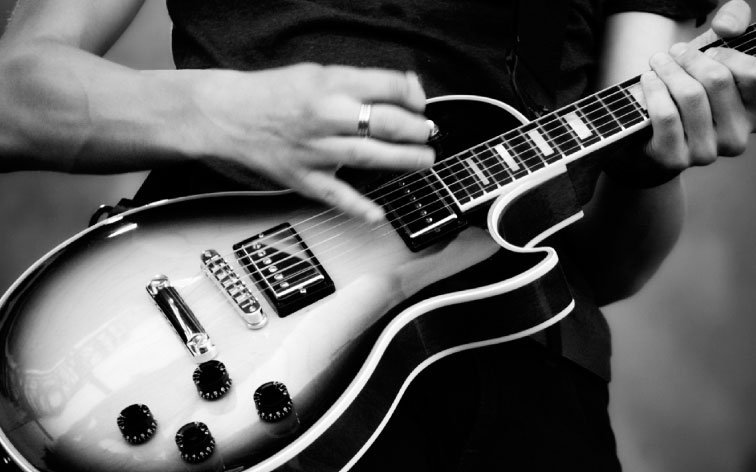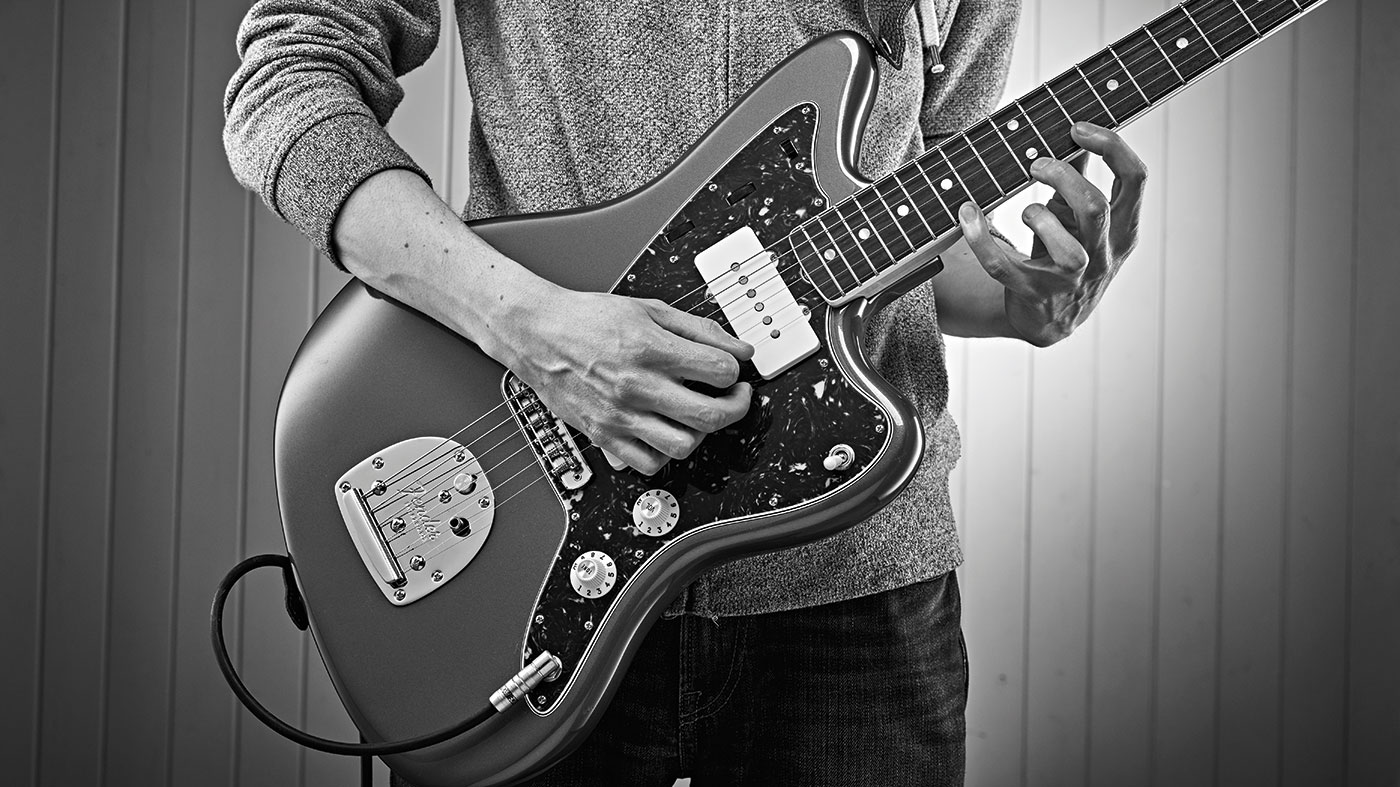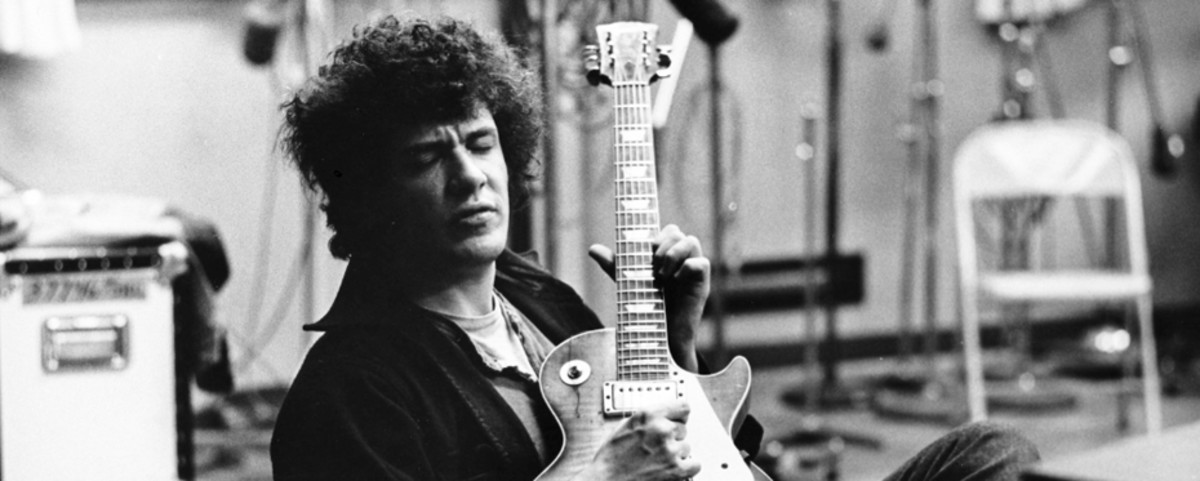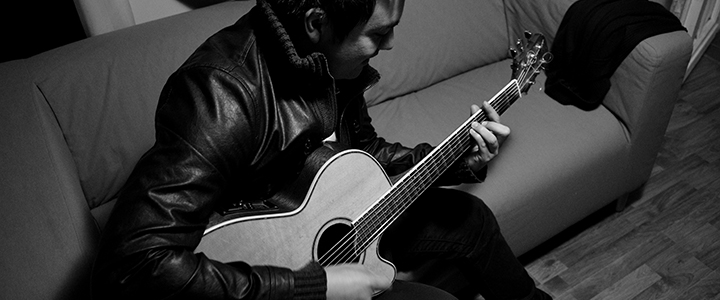In the beginning, I struggled a lot with rhythm guitar, and for an unusually long time, no matter how much I practiced; even my first guitar teacher (a funk master) couldn’t work out what I was doing wrong. I didn’t want to be one of those guitarists whose lead playing was light years ahead of their rhythm playing, to almost embarrassing levels, so I set about figuring out what exactly I needed to do bring my rhythm chops up to speed. As it turns out, I was practicing the wrong things in the sense that the things I was practicing weren’t in line with my goal of becoming a decent rhythm player. What I needed to do was some ‘TV Practicing’, which actually has little to do with practicing while watching TV.
What is TV Practicing?
TV Practicing is basically when you practice something that involves mindlessly repeating it until it becomes second nature; i.e. something you could do while watching TV. It is particularly pertinent to techniques such as rhythm playing, sweep-picking, tapping and many more. You see, I was trying to learn rhythm by learning a ton of chords, rhythm parts from songs I liked, different styles of rhythms, time signatures, and a bunch of other stuff, which you would think would help your rhythm playing but… it doesn’t hone in on the fundamentals of developing a good, solid rhythm technique by mindlessly repeating a single strumming pattern on one chord for a good few days.
I wanted to develop my funk rhythm playing, as I was heavily inspired by my teacher’s prowess, and so spent the best part of a week playing an E9 chord with a basic funk rhythm ad nauseam. I had plenty of time on my hands, so I would just walk around the house playing E9 over and over while reading, watching TV, or basically anything you can do with a guitar around your neck. If you’re a masochist, you can do this with a metronome but it’s not absolutely necessary.
About three or four days into this I noticed that my rhythm technique had improved more than it had during the entire year leading up to the discovery of TV Practicing, and that all the other stuff such as learning tons of chords and rhythm parts was now much easier and far more enjoyable.
TV Practicing for Speed
With the advent of Troy Grady’s excellent Cracking the Code series, it has become more widely known that the great guitar technicians such as Yngwie Malmsteen, Michael Angelo Batio, Eric Johnson, Steve Morse, among many others, certainly did their fair share of TV Practicing, whether purposely or not. The following exercise is taken from, ’50 Guitar Hacks for the Advancing Guitarist’, and is another example where the TV Practicing technique could be applied.
You may have noticed that when you tune the guitar the distance between all the strings, except the G string to the B string is a perfect fourth. From the G string to the B string it’s a major third, which kind of offsets any pattern or shape and requires a slightly different hand movement or fingering to accommodate it. It will really help your speed to zone in on this area of the fretboard, and TV Practice crossing from the G string to the B string and vice versa. Let me show you what I mean:
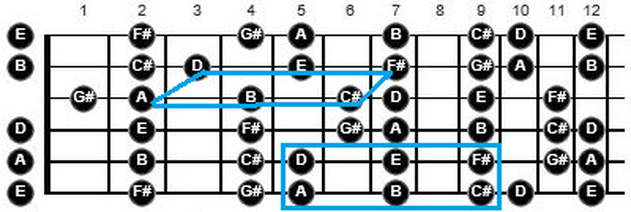
Compare the fingerings for the sets of notes on the low E and A strings with the ones on the G and B strings. They’re the same set of notes, but on the G and B strings you have to alter your hand movement; this is the pattern you should zero in on and practice if you want to improve your fluidity in this part of the fretboard. Continue up the neck; there’s a pattern starting on each note of the scale. This is a great application of TV Practicing because it’s purely mechanical and a good few days of sheer mindless repetition will improve your speed no end.
The essence of TV Practicing then is to reduce any technique to its most fundamental mechanics and perfect them through sheer repetition. The result of this reaches far beyond the one-dimensional tedium of the practice itself and gives your playing that technical solidity that is perhaps lacking.
